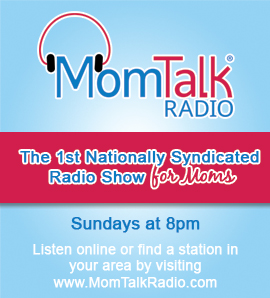Written by Angelique Millette
What to do if your little one is waking during the night from a bad dream and refuses to go back to sleep? Or what if your little one refuses to go to sleep at bedtime due to a several nights in a row of bad dreams? And what if your child has been inconsolable a upon waking at night but you aren’t sure if your child is waking due to a nightmare or a night terror? These are common questions parents have when responding to their little one’s nighttime sleep needs.
Nightmares
All children have nightmares at some point and as long as children are dreaming they may also have nightmares. Interestingly, even infants dream and according to one landmark study (Roffwarg et. al., 2006) newborns dream more than at any other time in a young person’s life. Nightmares are bad dreams and can happen at any point in a toddler or child’s life especially so if a child has just had a traumatic event or situation. Several different studies have shown that children may have nightmares following surgery, tooth extraction, and motor vehicle accidents. Nightmares can also begin during periods of developmental change such as the period between 18-21 months and again right before a child’s third birthday and fourth birthday. These are periods of individuation, when a child may become more sensitive or emotional as they become
more independent.
Nightmares occur during REM (Rapid Eye Movement) sleep cycles and typically occur in the final stages of sleep, later in the night. This makes nightmares different from night terrors, which typically occur in the first few hours of sleep (see below).
Nightmares are thought to be most common between the ages of 3 and 5 years old but can begin as early as the first year of life. They can be an important way that young children express their fears, anxieties, feelings, and their day-to-day experiences and are typically not a sign of emotional or psychological problems. Some children may become so fearful that they may protest going to sleep or sleeping in their beds at night.
What to do to help your child:
- Comfort and reassure your child
- Write a sleep book with your child and read at bedtime (e-mail me info@angeliquemillette.com if you
- would like a handout for writing a sleep book)
- Leave the lights on and the door open
- Use a night light in your child’s room
- Be sure to avoid talking about scary thing before bedtime
- Be sure your child doesn’t see or hear scary movies or tv programs
- Try to keep stress to a minimum
- Walk your child back to their bed and provide comfort in their bed/room
- Make sure your child is getting enough sleep, stick to the same bedtime
- During the bedtime routine, red or tell a happy “settling” story that helps your child become calm
- Don’t use monster spray or pretend to get rid of the monsters in your child’s room
- Play in your child’s room during the day
- Provide your child with a snuggly item or several snuggly items
- Spend one-on-one time with your child during the day and at bedtime
When to call your child’s doctor:
- The nightmares become worse or happen more often.
- Your child’s fears begin to interfere with day to day activities.
Night Terrors
Night terrors, also called “confusional arousals,” commonly begin around ages 2-4 years old. They are considered normal until age 6 and are seen in approximately 3% of children. There is often a family history of confusional arousals and night terrors and they are most common in boys. They are often triggered by sleep deprivation or by a sudden change in the child’s schedule in the days preceding such as vacations, end of school year, and visiting relatives and do not have a psychological basis. They can also be triggered by fever and illness, and research shows they may be triggered by allergies. They are very different from nightmares in that during a night terror, a child is not dreaming and typically will have no memory of the event afterwards. Once it is over, the child will usually go back to sleep without much problem. Night terrors occur in the
transition period between deep non-REM sleep and a lighter sleep stage, whereby the child becomes stuck and is unable to completely emerge from slow wave sleep. Night terrors typically occur within two hours of going to sleep.
Although night terrors are harmless for children they can be very upsetting for parents who may be concerned that their child may hurt themselves. Your child may jolt awake, thrash his body, scream, or moan but he will be unable to answer you or hear you. Your child’s eyes may be open or closed, and your child may look confused and may not recognize you. The duration of a night terror may be 1-30 min, with an average time of 5-10 min. During the night terror, you can prevent your child from injury but do not try to wake him. Make soothing comments and hold your child but do not shake or shout at your child to attempt to wake them up. The night terror will pass and he will fall right back to sleep.
What to do to help your child:
- Stay close to your child and do not wake him up
- Reduce stress in your child’s life
- If traveling, stick to your child’s schedule and bedtime
- Prepare other caregivers (i.e. babysitters, grandparents) for these episodes
- Try a “scheduled awakening”: for several nights, observe how many minutes it is from the time your child falls asleep until the start of the night terror. Wake your child for a full 5 minutes, 15 minutes before the expected time of the night terror. Do this for seven nights in a row to fade night terrors. If the night terrors return, you can repeat the scheduled awakening as needed.
When to call your child’s doctor:
- Terrors lasting longer than 30 min
- Your child has stiffening, jerking, or drooling
- Terrors are happening during the second half of the night
- Terrors happen after seven nights and continue
- If family stress may be a factor


